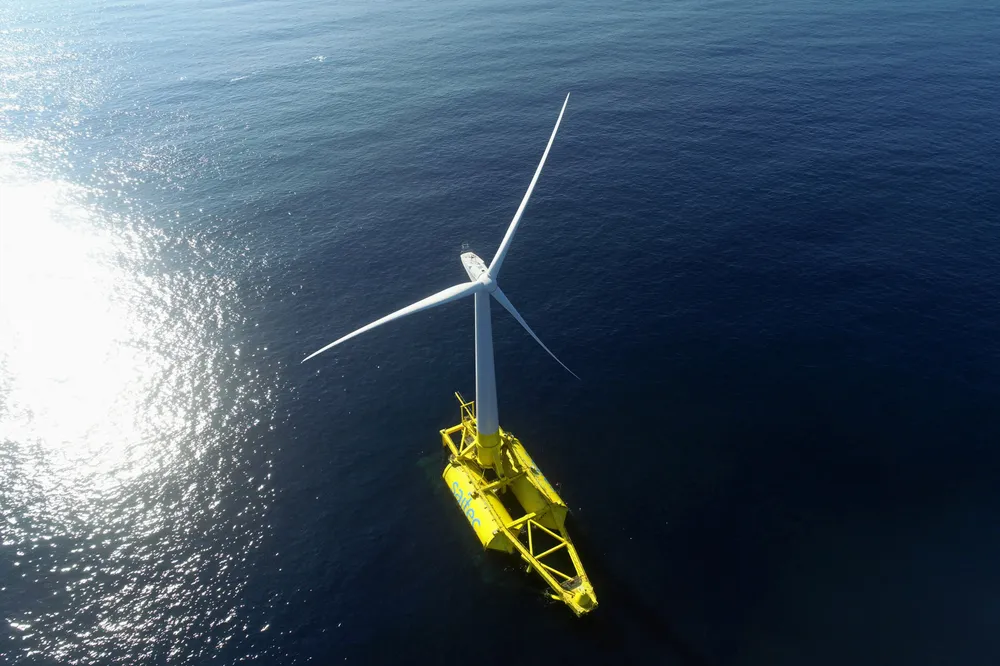With a little help from friends | South Brittany tender underlines need for floating wind cooperation — study
Aegir's initial take on the results of France's South Brittany tender was that it might need Chinese turbines to fly commercially

The outcome of France’s recent South Brittany tender may have shocked the industry with its low strike price, but it could come to represent a breakthrough for the floating wind ambitions of several Southern European nations, provided they understand the need for cooperation, new analysis suggests.
Aegir suggested that the South Brittany could even provide a rallying point for a clutch of Southern European nations with ambitions for floating wind, but warned that those nations must appreciate the need to work together.
The South Brittany tender was billed as a first ever competitive tender for commercial floating wind using the Contract for Difference (CfD) mechanism.
It attracted six valid bids, with a winning strike rate of €86/MWh. Aegir said cooperation could offer the key to unlocking floating wind potential at such competitive rates as it offers a means of aligning tenders to achieve coordinated timing and capacity enhancing synergies.
If Southern European countries can "rapidly cooperate to create a delivery pipeline through supportive regulatory frameworks, even lower prices may be achieved,” the report suggested.
The challenge is daunting as future electricity prices in Southern Europe are projected to remain below the expected levelled cost of energy (LCOE) for floating wind.
The trick, Aegir suggested, is to shore up support for floating wind technology in its early stages in the interest of a sustainable regional pipeline of projects.
Aegir drew a parallel with the successful early development of bottom-fixed offshore wind which, it suggested, was made possible by “clear government support and strong cooperation between North Sea countries”.
Between 2020 and 2020, Denmark, the UK and Germany created a joint pipeline of around 10GW with attractive regulatory frameworks that enabled the necessary investments in the offshore wind value chain, significantly reducing costs in record time.
“This approach should be replicated for floating wind in Southern Europe," Aegir stated.
Friends or rivals?
France was described as having “the most advanced offshore wind market in Southern Europe, with 1GW in operation and around 6GW under development. France also offers relatively shallow water depths across floating wind sites, and fixed-bottom potential too.
The report summarised regulatory moves and capacity targets in Spain and Portugal where offshore wind tenders may be launched later this year, with multiple gigawatts promised.
National targets for 2030 envisage up to 3GW in Spain and 2GW in Portugal.
It also summarised moves in Greece, where a plan for allocating and developing offshore wind is expected later this year and a first competitive tender is expected around 2027.
Forecasts of higher electricity prices in Italy are raising expectations about what the government there will be willing to pay and helping to attract developers. That is despite long wait times for regulatory approvals and the lower wind speeds that Italy has to offer.
France and Spain were singled out for their higher resource competitiveness, with France the outright winner in terms of wind speed, shallower waters and the potential for bigger projects.
Greece was slightly ahead of Portugal on wind speed, but requires deeper waters for most of its projects.
In most of these countries, there is some continuing uncertainty about timelines to be addressed.
The French government currently stands out with its “ambitious target’ of 18GW by 2035 and plans for multiple auctions before 2025, including one “mega-tender” event with 8-10GW on offer.
France’s AO5 tender in South Brittany was described as “kick-starting the commercial journey of floating wind”, with more tenders expected there before the end of this year, potentially adding another 2.5GW to the pipeline.
Ensemble
Aegir said that a cooperative, international approach to this will be key to turning any of these plans into reality.
"France alone may not be able to generate the volumes required to unlock the necessary investments in the floating wind supply chain," Aegir stated.
"If each country attempts to develop its own supply chain independently, significant inefficiencies could arise, with strong competition in some components and under capacity in others."
For this reason, Aegir recommenced that Southern European governments with an interest in commercial floating wind should collaborate to create synergies and avoid bottlenecks.
Aligning the volume and timing of tenders and adapting project commercial operation (COD) dates, can prevent constraints in the value chain and establish a sustainable pipeline of projects in the long term, the report suggested.
Aegir also grappled with the topic of subsidies and revenue stabilisation mechanisms, acknowledging that electricity prices in Southern Europe are expected to lag LCOE levels for floating wind.
"Southern European countries need to support floating wind technology in its early stages to harness the green energy, economic benefits and social benefits that this nascent industry offers," the report stated.
It referred to an estimated €8-12bn of support for projects in the UK, Denmark and Germany under contracts for difference with CoD dates up to 2026.
Chinese solution?
Aegir's earlier research note on the South Brittany tender had suggested that Elio and BayWa r.e. might struggle to carry their project through to commercial maturity, unless they opted for cheaper Chinese turbines to lower the LCOE.
Mingyang was among the turbine suppliers nominated by bidders, along with Vestas, GE Vernova and Siemens Gamesa.
Some industry insiders were not impressed with the suggestion that this route might be a requisite of success in a high-profile European tender such as this.
"It would be a shame if Chinese turbines are seen as the way to try and make the business model float," they said. "We've seen what happened to solar panel manufacturers in Europe," an executive with one developer commented.
(Copyright)